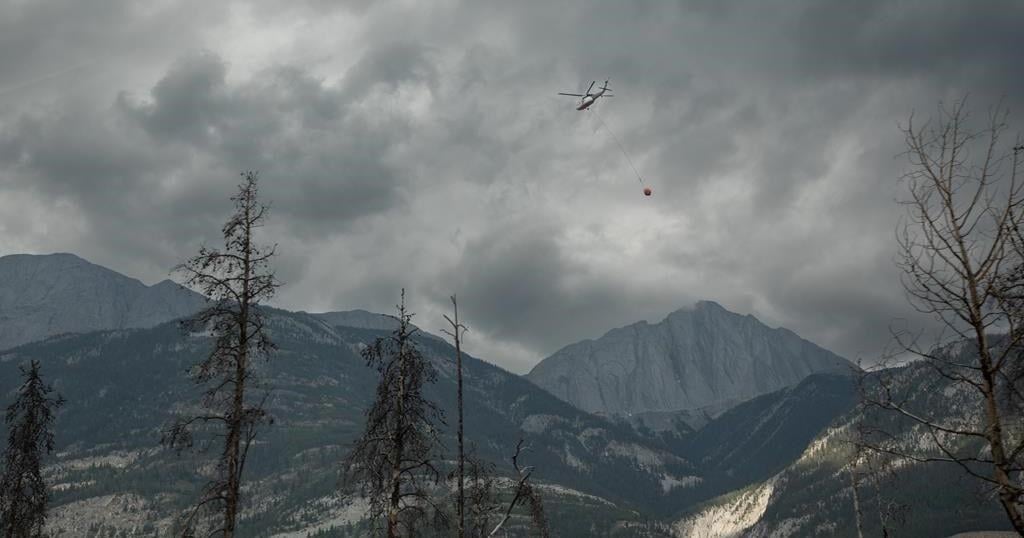The mayor of Jasper, Alta., says a plan is in place for residents of the burned community to return to see the state of their homes, but fire and weather are not co-operating.
“They want to get back and see their homes,” Richard Ireland, alongside provincial and national counterparts, told reporters in Hinton, Alta., on Thursday.
“It is jarring, but it is also part of the healing journey that we will all have to go through.”
Ireland said people can only return when it is safe, noting there is still fire on the landscape.
“Weather like this — increasing temperatures, decreasing humidity and a forecast of increasing winds — are all prescriptions for fanning the flames,” he said.
“So we’re cautious, but we recognize the need and we’re working (toward) that.”
The fire that forced 25,000 people out of Jasper National Park 10 days ago, including 5,000 residents in the Jasper townsite, has been extinguished in the community but continues to burn in the park and poses a threat to the town.
About a third of all structures in the town were destroyed, but key infrastructure, including schools and the water treatment plant, was spared.
Evacuees with no place to stay were directed to centres in Edmonton, Calgary and Grande Prairie.
Some residents of seniors lodges who were forced to flee west when fire initially cut off east access routes were being shuttled to accommodations in Hinton from B.C. communities, including Valemount.
“We need to get those individuals back on this side of the (boundary) line,” said Jason Nixon, Alberta’s seniors minister.
Work continued on other fronts.
Parks Canada said sprinklers were installed on some buildings north of the park’s townsite, as fire activity was expected to increase there.
Power was also restored to the downtown and crews were cleaning up debris.
Parks Canada was finalizing a damage assessment map that was to be released.
A plan was in the works to allow campers who had to abandon their trailers in the park to go back for them.
The main road through the park, Highway 16, reopened at select times for heavy commercial traffic to keep goods moving while still allowing fire crews mobility and flexibility.
And federal and provincial officials said they’re working to fast-track insurance claims, development permits and employment paperwork to help Jasper residents find work and rebuild the community.
As of Thursday afternoon, an estimated 118 wildfires were burning in the province’s forest protection area, with 19 listed as out of control.
Town staff said the Jasper wildfire is estimated at 325 square kilometres in size.
This report by The Canadian Press was first published Aug. 1, 2024.























